The Ultimate Guide To Choosing Hair Extensions For Thin Hair
Hair extensions are the go-to solution for people with thin hair thanks to their durability, hair enhancement, and cost-effectiveness.
On Oct 18, 2023 – 10 minutes read
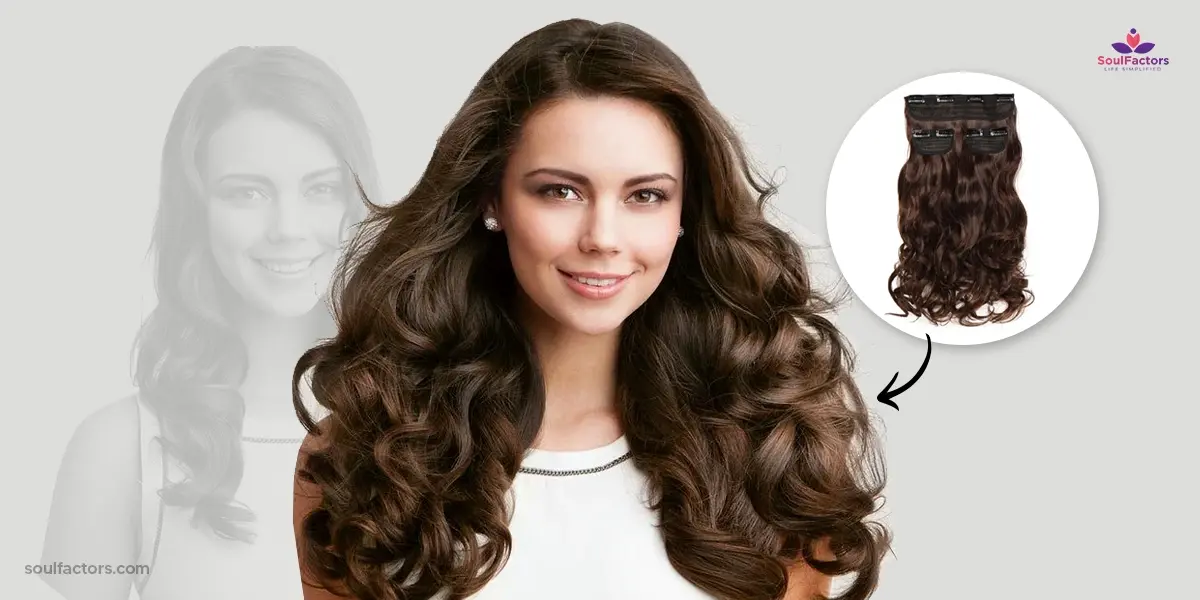
Are you noticing the uneven length of your hair and the lightweight and scanty scalps on your head? Your hair is certainly thinning. Thinning hair is most likely to occur due to heredity, hormonal alterations, medical conditions, hairstyles, and even hair treatments. If you’re bothered about your thin hair at visible parts on your head, don’t panic. Hair extensions stand as your best bet for this condition. So, tag along as we walk you through the process of picking the best hair extensions for thin hair.
Hair Extensions For Thin Hair: Understanding Thin Hair
Thin hair refers to having less hair on your head, which can make it look less full. It’s different from complete baldness but can give the appearance of less hair.
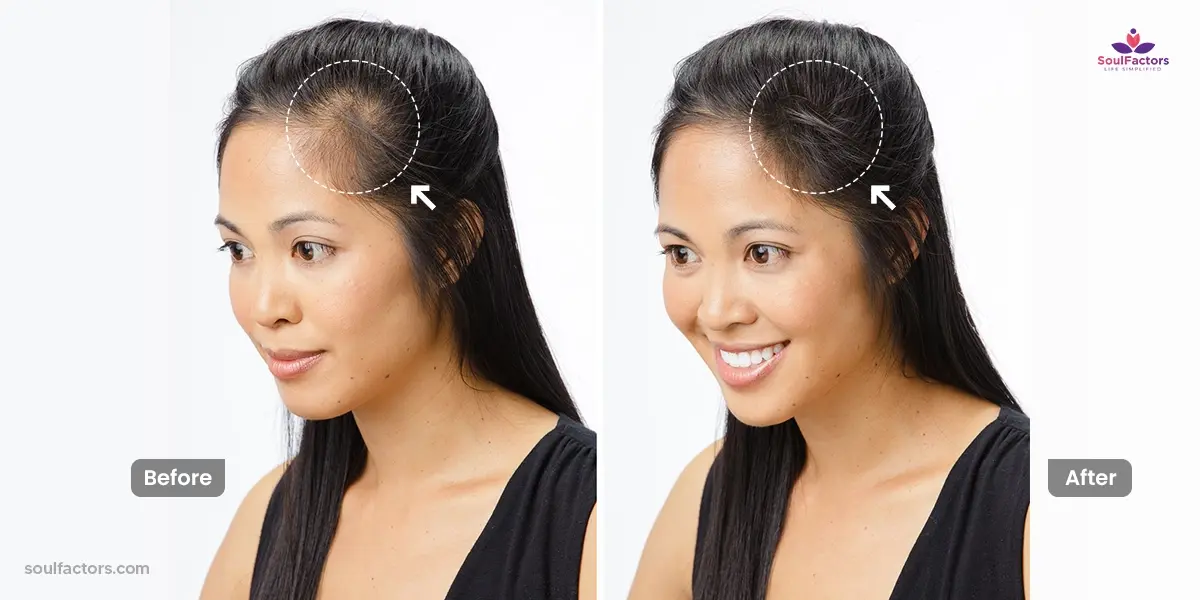
Furthermore, thin hair can result from genetic factors, aging, health issues, and certain hairstyles. Family history, medical conditions, stress, and tight hairstyles can contribute to thinning hair.
However, improving your diet with foods rich in vitamins and minerals, maintaining a clean and healthy scalp, and adopting gentle hair care habits can help reduce hair fall naturally.
On the other hand, these extensions are a cosmetic solution to make your hair appear thicker and longer if you have thin hair. They come in different types and can be used to enhance the volume of your hair.
Just like your natural hair, it’s important to care for hair extensions properly to keep them safe.
Types Of Hair Extensions For Thin Hair
There are lots of different hair extensions to choose from. Although all types can be used for thin hair, some are more effective than others.
Hair extensions come in various forms and can be used in different ways to create different hairstyles. For instance:
Clip-in Hair Extensions
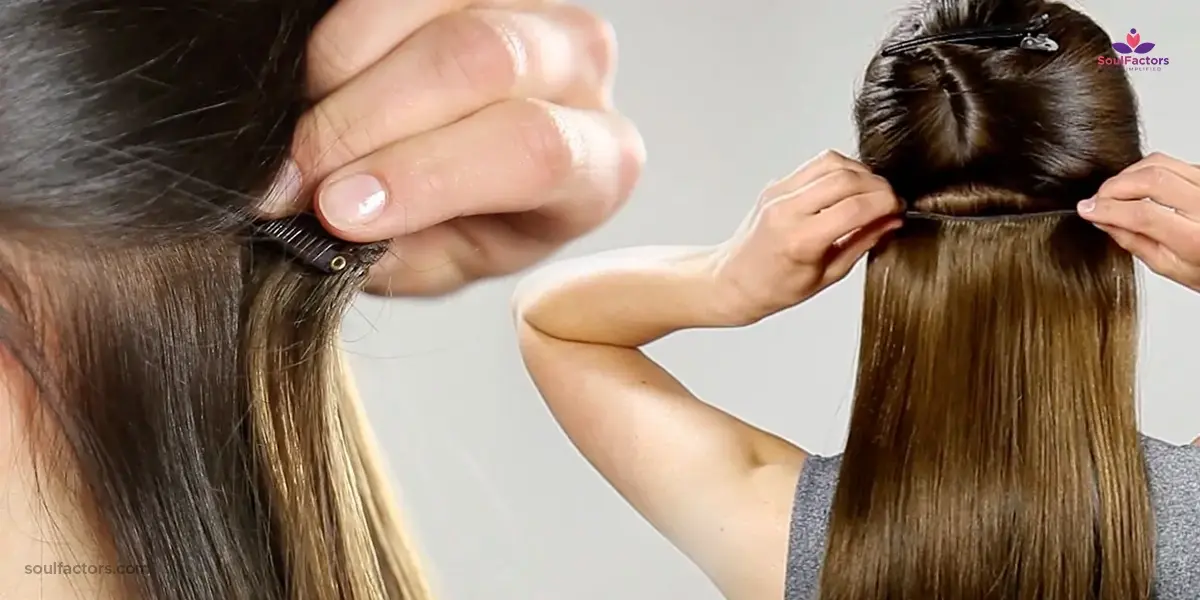
Clip-in extensions have little clips that grasp your natural hair, similar to barrettes or bobby pins. They stay in place until you unclip them to remove them, which is called “detaching.”
Tape-in Hair Extensions
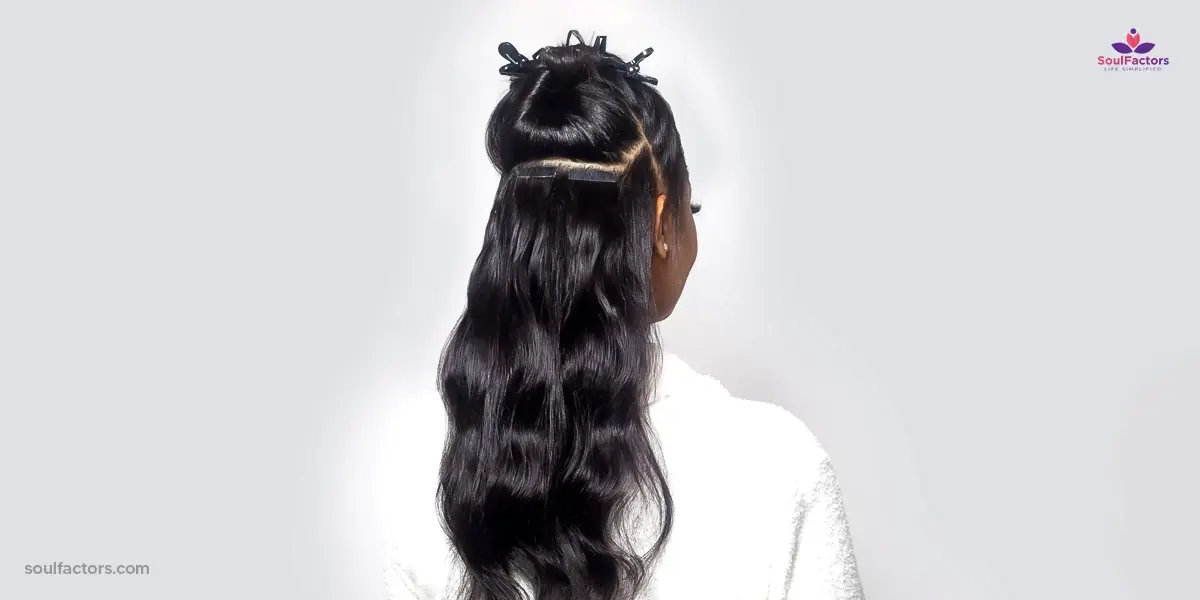
These extensions use a special adhesive to stick to your hair. They’re simple to put on and take off, and you can reuse them for about a year if you take good care of them.
Sewn-in Hair Weft Extensions
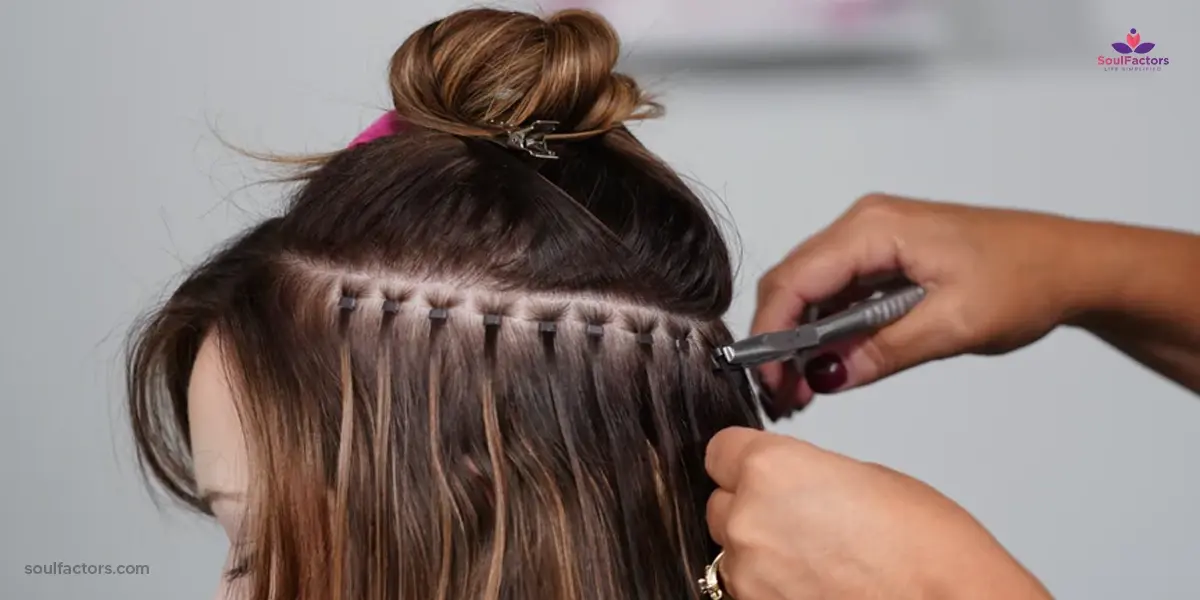
These extensions are considered the best because they’re gentle on your hair. They don’t use adhesives or heat; instead, they use microbeads and are sewn in with a needle and thread.
Fusion/Bonded
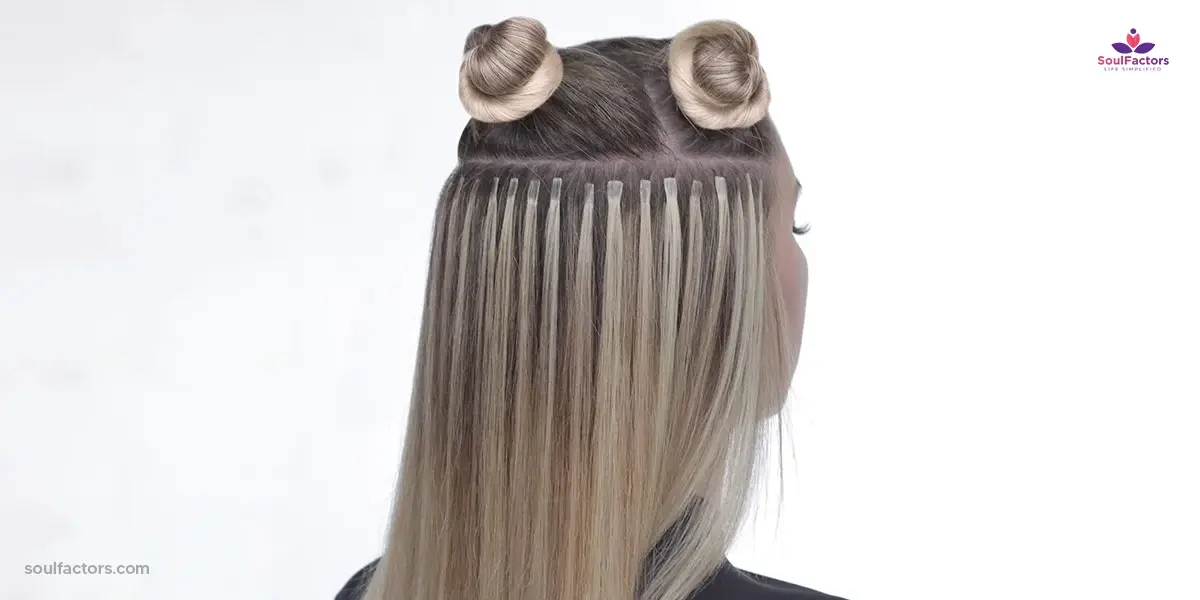
Bonded hair extensions are a good choice for thin hair. These extensions are attached using a permanent method, where your hair and the extensions are bonded with heated keratin. This bonding can last for up to 6 months.
However, they might not be the safest option for thin and fine hair as they can potentially damage it. They are a better choice for those with coarser hair who want a low-maintenance option.
Halo/Topper Hair Extensions
Weave extensions are a great way to add volume and length to thin hair. What’s nice about weave extensions is that they’re not permanent.
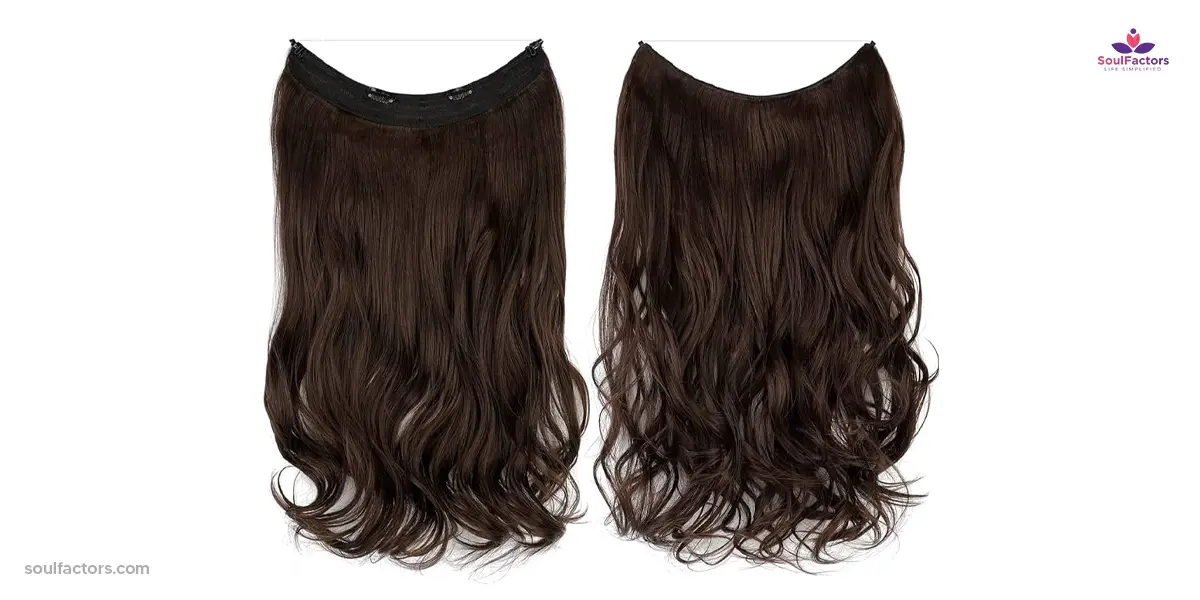
You can put them in, take them out, and repeat as you like. It’s also relatively easy to use a halo hairpiece or a topper in thin hair, so you don’t need to worry about making mistakes.
Halo and topper hair extensions come in different lengths and textures, giving you the freedom to create various styles. If your hair is very thin or straight, adding some curls or waves before using weaves can make your hair look fuller without putting too much weight on your hair.
Now you know the types of hair extensions, it’s worth knowing that these are also compatible with thin hair. However, knowing the best hair extensions for your thin hair can be tricky. Don’t worry, we’ve got you covered.
How To Pick The Right Hair Extensions For Thin Hair?
When it comes to shopping, there are several factors we keep in mind to make sure we get the best out of your purchase. So to make things easier, we’ve compiled some effective tips you can follow to get the best hair extensions for thin hair.
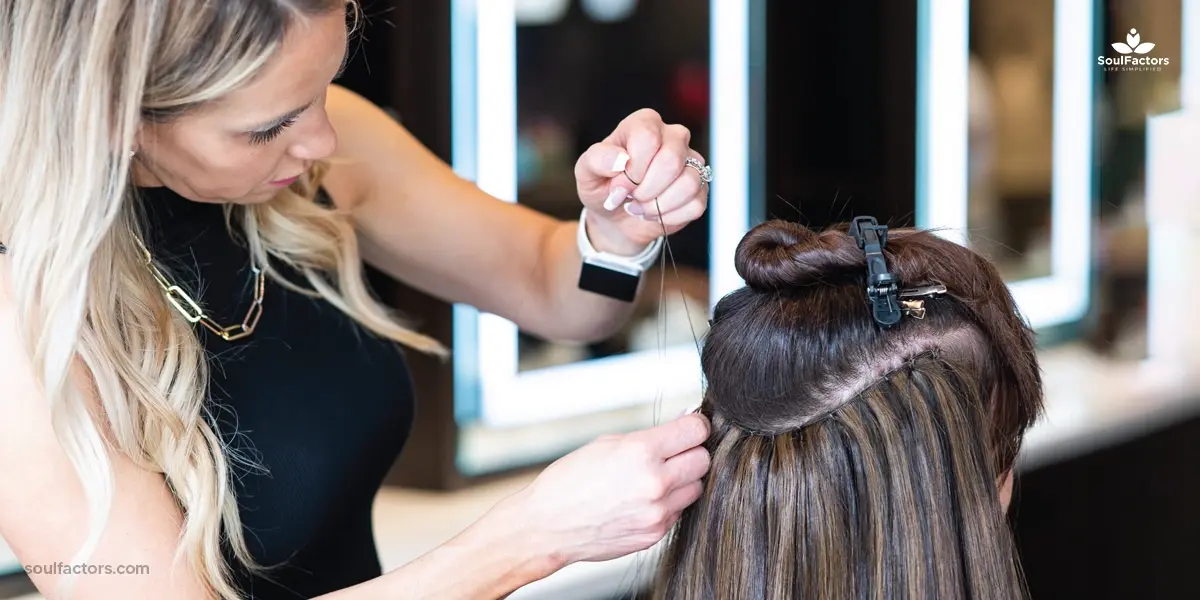
- Opt For Lightweight Options: Select lightweight extensions to prevent them from slipping out and causing stress on your thin hair.
- Choose Gentle Application Methods: Look for hair extensions that involve gentle application and removal processes to minimize the risk of damage to your natural hair.
- Consider Blending: Think about how well the extensions can blend with your natural hair. Human hair extensions are often better for achieving a seamless look, especially if you have thin hair.
- Choose High-Quality Hair: Invest in high-quality extensions, as they tend to be thinner, lighter, and more natural-looking. Remy human hair extensions for thin hair are a popular choice because it’s soft, smooth, and blend well with hair.
- Select the Right Length: Opt for extensions that match your hair’s length or slightly longer. Extensions that are too long can weigh down thin hair and make it look even thinner.
- Consider the Attachment Method: Different attachment methods work better for various hair types. Tape-in or hand-tied extensions are often gentler and less damaging than methods that involve heat or glue.
- Regular Maintenance: Thin hair can be more delicate, so proper care is crucial. Follow the maintenance instructions provided by the manufacturer or hairstylist to keep both your natural hair and extensions in good condition.
- Test for Allergies: If you have sensitive skin or allergies, consider a patch test with the adhesive or clips used for extensions to ensure you won’t have adverse reactions(1).
- Consult a Hairstylist: Seek advice from a professional hairstylist who can provide personalized tips on selecting and blending hair extensions that are suitable for your specific hair type and needs.
Keep in mind, that finding the best hair extensions for thin hair often involves a combination of factors, including the quality of the extensions, the method of attachment, and proper maintenance. Nevertheless, consulting with a professional is highly recommended to make the best choice for your unique hair needs.
Application And Maintenance Of Hair Extensions
As with every hair-related product and non-hair-related item, there are several do-it-yourself tactics to save you money and additional expenses.
Before applying hair extensions for thin hair, consult with a professional hairstylist who can assess your hair type, texture, and needs. Together, you can determine the best type, length, and color of extensions for your desired look.
Ensure your hair is clean and dry before applying for extensions. Remove any tangles and knots, as this will make the process smoother.
Select the appropriate attachment method based on your hair type and preferences. Common methods include tape-in, clip-in, sew-in, fusion/bonded, and microbead extensions. The stylist will apply the extensions following the chosen method.
Once the extensions are applied, the hairstylist will blend them with your natural hair, ensuring a seamless and natural appearance. They may cut and style the extensions as needed to achieve the desired look.
In terms of maintenance, wash your hair and extensions with a sulfate-free and gentle shampoo. It’s crucial to keep the scalp and extensions clean to prevent oil buildup, which can affect the adhesion of the extensions.
Use a lightweight conditioner on the mid-lengths and ends of your hair, avoiding the attachment points. Deep conditioning treatments can help maintain the health of the extensions.
Limit the use of heated styling tools to prevent damage to the extensions. When you do use them, use a heat protectant spray.
If you swim, protect your hair and extensions from chlorinated or saltwater by wearing a swim cap. Rinse your hair thoroughly with clean water after swimming.
Regularly check the attachment points for any signs of damage, such as slipping or loosening. If you notice any issues, consult your stylist for repairs.
Pros And Cons Of Hair Extensions For Thin Hair
As with many other hair and non-hair-related products, there are some pros and cons attached.
Pros
- They can instantly make your thin hair look fuller and more voluminous, which is challenging to achieve with hair products for thinning hair alone.
- Depending on the method you choose, extensions can last for several months and can even be refitted, making them cost-effective in the long term.
- Hair extensions come in various shades and colors, allowing you to achieve a natural and seamless match with your hair.
Cons
- Hair extensions can be of high maintenance, requiring proper care and regular maintenance to keep them looking good. Neglecting maintenance can lead to issues.
- Improper handling, such as excessive pulling or leaving extensions in for too long, can potentially damage your natural hair. However, with proper care and maintenance, this risk can be minimized.
Do Hair Extensions Damage Your Real Hair?
Hair extensions, by themselves, don’t harm real hair. However, several things can affect the health of your natural hair when you use extensions.
The way extensions are attached matters. Some methods and adhesives can be harmful if not done correctly. The weight of extensions and how they’re attached can put stress on your real hair, causing damage.
Also, the quality of the extensions is important. Low-quality extensions, made from cheap materials, can tangle and shed, causing issues for your natural hair.
Taking care of both your extensions and real hair is crucial. If you don’t follow the recommended care routines, you can face problems.
Styling Thin Hair With Extensions: Tips And Tricks
Now you’ve understood thin hair, the types of hair extensions suitable for it, and how to choose the right ones.
But, if you’re wondering how to style thin hair with extensions, then check out these tips and tricks.
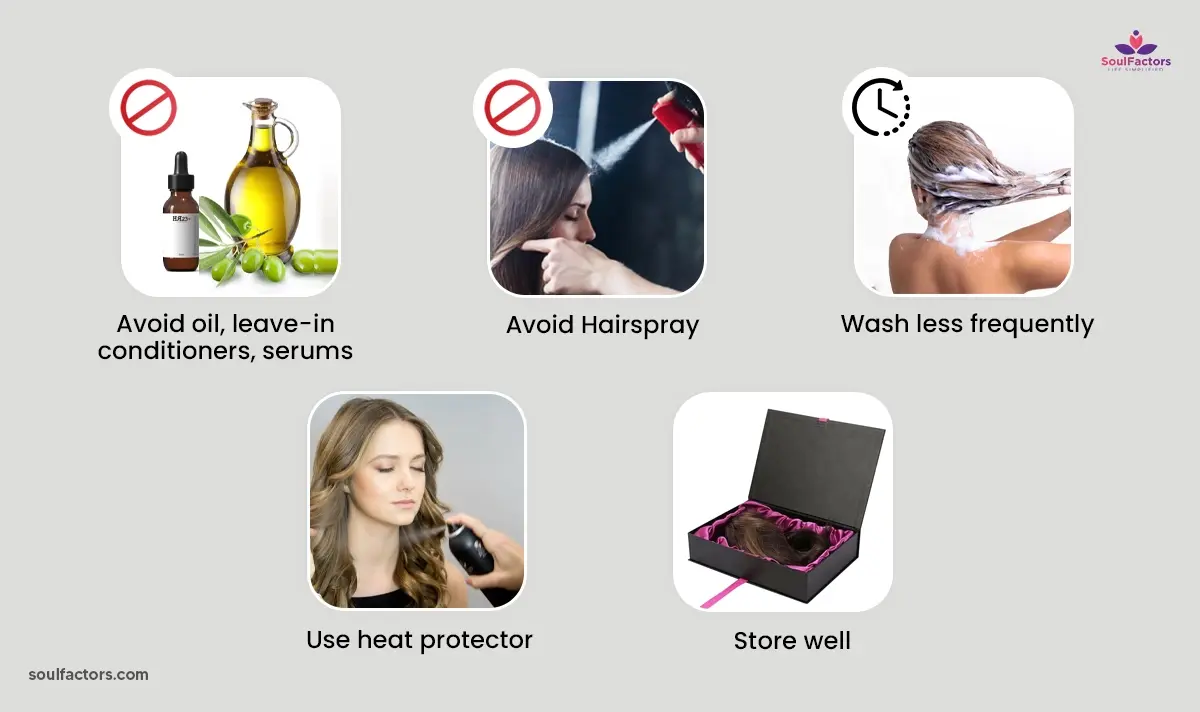
- Avoid oil, leave-in conditioners, and serums: Avoid using products on your hair extensions like oils, leave-on conditioners, and serums, as they can make the extensions sticky and attract dirt.
- Avoid Hairspray: Don’t use hairspray on your extensions, as it can damage them, and the chemicals may change their color.
- Wash less frequently: Wash your hair extensions less frequently, ideally every three months, using regular or oil-infused shampoo and conditioner. They don’t get greasy like real hair.
- Use heat protector: Use a heat protector when styling your extensions with heat tools to prevent damage. Heat protectors act as shields against heat-related damage.
- Store well: Store your hair extensions in a cool, dark place, like a box in your closet, to protect their quality, and color, and prevent dust buildup. Avoid exposing them to direct sunlight.
Are wigs or extensions better for thin hair?
For thin hair, you can choose either wigs or extensions. Wigs cover your entire head, offering a complete transformation, while extensions add volume and length to your existing hair.
Wigs are good if you want a total change or have severe thinning. Extensions work well if you want to enhance your hair’s volume and style while keeping some of your natural hair visible. The choice depends on your desired look and comfort.
Conclusion
Hair extensions are a helpful solution for thin hair as they provide more volume and length to make scanty hair look full. They come in various types, like clip-in, tape-in, sewn-in, bonded, and halo extensions, each with its benefits.
While it can be tricky to find good human hair extensions for thin hair, one tip to make the search easier is to opt for lightweight, high-quality options. Additionally, these should blend well with your natural hair along with gentle attachment methods.
FAQ
Hair extensions can be a great idea for thin hair, as they add volume and fullness. However, the right application method and proper care are essential to avoid damage.
They can last around 3-4 months in thin hair, depending on the method. With proper care, they can be refitted and reused multiple times.
Clip-in hair extensions are typically gentle on your natural hair and don’t cause damage when applied and removed correctly. They are a good choice for avoiding damage.
Ensure they are properly blended with your natural hair. You can use styling techniques, like teasing or backcombing, and choose extensions that match your hair color and texture for a seamless look. An example is the invisible hair extensions for thin hair.

Subscribe to Newsletter
Elevate your routine, stay on trend, and embrace a personalized beauty journey with our curated insights.


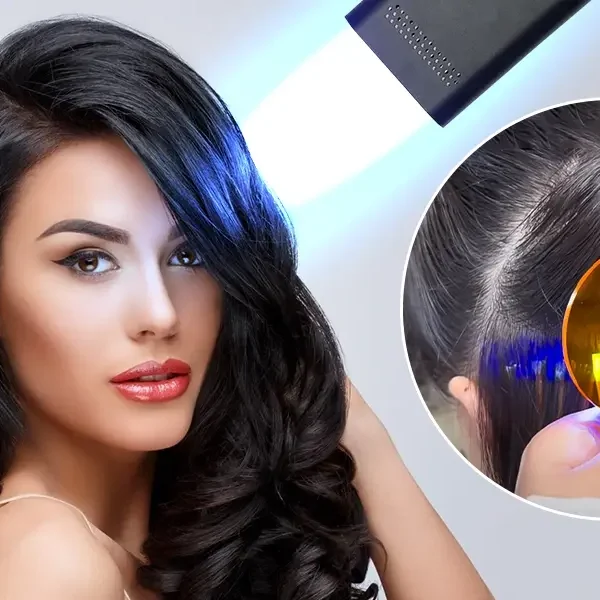


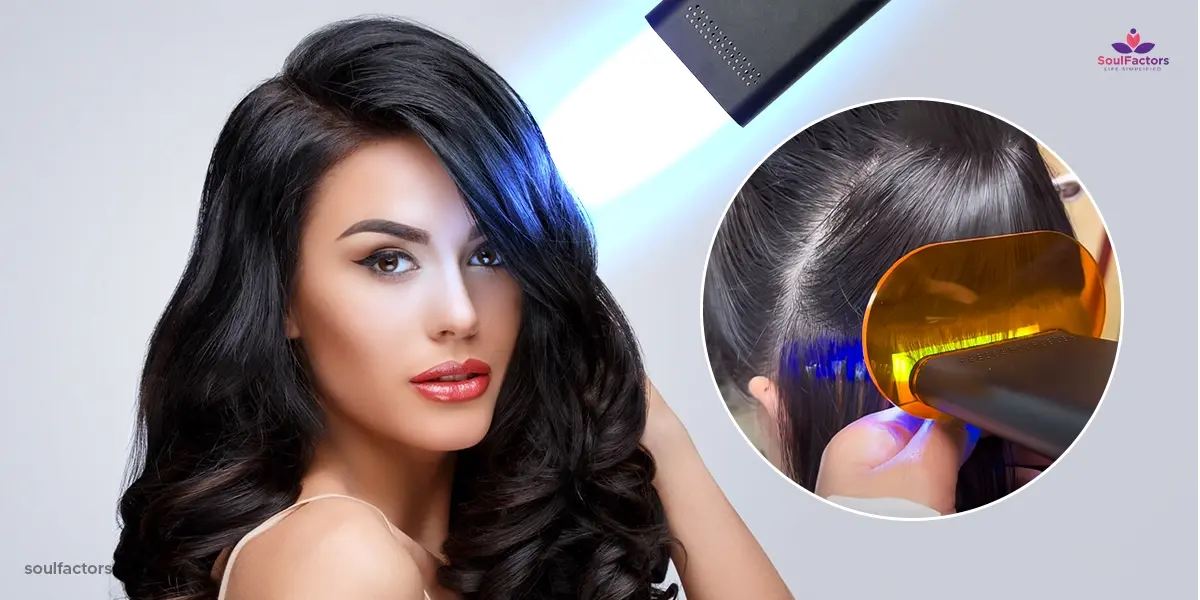

Write a Comment